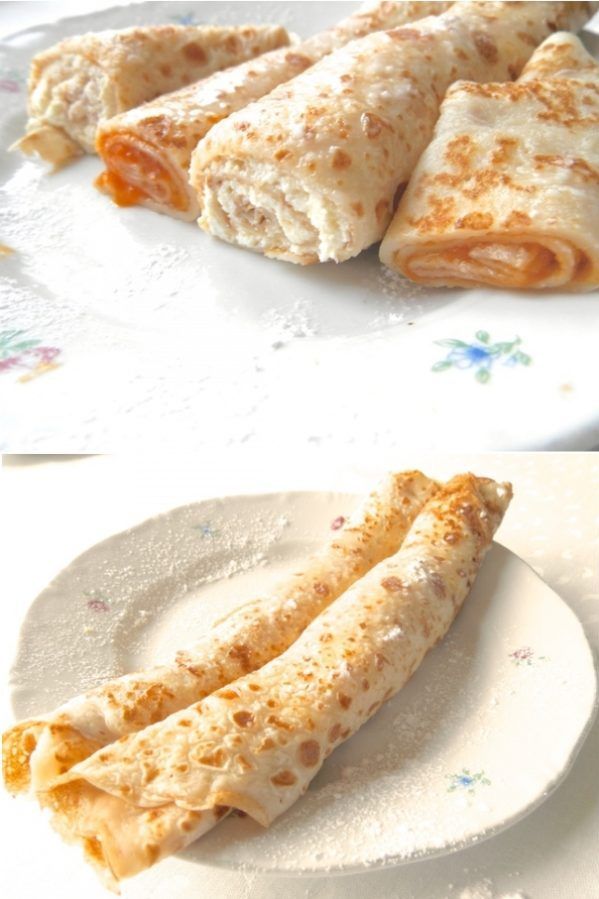
Preparing the Perfect Palacsinta
Making Palacsinta might seem like a straightforward task, but there is an art to achieving the perfect thin, tender pancake. The key to Palacsinta is getting the batter right and mastering the cooking technique.
Making the Batter:
- Whisking the ingredients: The first step is to whisk together flour, milk, eggs, sugar, and salt into a smooth batter. You can either use a bowl and whisk or even a blender for a super-smooth consistency. Some recipes recommend letting the batter rest for about 20 minutes to allow the flour to absorb the liquid and create a smoother texture.
- Consistency is key: The batter for Palacsinta should be thin enough to spread easily in the pan, but not too runny. It should have a pourable consistency similar to heavy cream.
- Resting the batter: Resting the batter for 20 minutes allows the gluten to relax, which leads to a tender pancake. This step is optional, but highly recommended for the best results.
Cooking the Palacsinta:
- Preparing the pan: Heat a non-stick skillet or frying pan over medium heat and brush it with a small amount of oil or melted butter. This step is important to ensure the pancakes don’t stick and that they cook evenly.
- Pouring the batter: Using a ladle or measuring cup, pour a small amount of batter into the center of the pan. Tilt the pan gently to spread the batter evenly across the surface, forming a thin, round pancake.
- Cooking time: Cook the pancake for 1-2 minutes or until the edges start to lift. Then, carefully flip the pancake using a spatula and cook for another 30 seconds to 1 minute until golden brown.
- Repeat: Continue this process until all of your batter has been used. You can stack the finished pancakes on a plate, and they will stay warm. If you’re cooking multiple pancakes, you may need to add a little more oil to the pan between batches to prevent sticking.
Palacsinta: Sweet and Savory Fillings
One of the reasons Palacsinta is so special is because it can be filled with nearly anything your heart desires. The fillings can be sweet or savory, depending on your preference and the occasion.
Sweet Fillings:
Sweet Palacsinta are a favorite in Hungarian households, often enjoyed as a dessert or a treat with tea. Some classic fillings include:
- Jam: Apricot, strawberry, or raspberry jam are common choices, sometimes mixed with a little sugar or cinnamon.
- Nutella or Chocolate Spread: For an indulgent twist, many people fill their Palacsinta with rich chocolate spread or Nutella.
- Sweetened Ricotta Cheese or Cottage Cheese: A popular filling, especially when mixed with sugar and sometimes a bit of vanilla or lemon zest.
- Powdered Sugar: For simplicity, sweet Palacsinta are sometimes filled with just a sprinkle of powdered sugar.
Savory Fillings:
Savory Palacsinta are perfect for lunch or dinner. They can be filled with:
- Mushrooms and Sour Cream: A traditional savory filling often found in Hungarian homes, featuring sautéed mushrooms and a dollop of sour cream.
- Ground Meat: Palacsinta can be filled with seasoned ground beef, chicken, or pork, creating a hearty and satisfying dish.
- Cheese: A mixture of cheese, such as shredded cheese or feta, combined with herbs or spinach, makes for a delicious filling.
- Spinach: Sauteed spinach and cheese is another popular savory filling, often served with a light tomato sauce.
Serving Palacsinta: A Hungarian Tradition
Palacsinta is a versatile dish, and its serving methods can vary depending on the occasion. Here are some common ways Palacsinta are enjoyed in Hungary:
- As a Main Dish: In Hungary, Palacsinta can be served as a main dish, especially with savory fillings like meat, vegetables, or cheese. These rolled-up pancakes are typically served with a side of fresh salad or a dipping sauce.
- As a Dessert: Sweet Palacsinta are often served for dessert after a hearty meal. They may be drizzled with chocolate syrup, sprinkled with powdered sugar, or topped with a scoop of vanilla ice cream.
- For Special Occasions: In Hungary, Palacsinta is a popular dish for family gatherings, holidays, and celebrations. It’s often made in large batches, and everyone takes part in the filling and rolling process, making it a communal activity.
- For Breakfast or Brunch: Palacsinta is commonly eaten for breakfast, sometimes served alongside a cup of hot tea or coffee.
Conclusion
Whether you enjoy Palacsinta filled with sweet jam, creamy cheese, or savory meats, there is no denying the universal appeal of this Hungarian pancake. The combination of simple ingredients, the delicate texture, and the versatility of fillings make it a dish that can be enjoyed at any time of the day. From casual family dinners to festive gatherings, Palacsinta brings people together around the table, celebrating the joy of shared meals and memories. If you haven’t yet tried making Palacsinta, it’s time to bring a little taste of Hungary into your kitchen. Happy cooking!